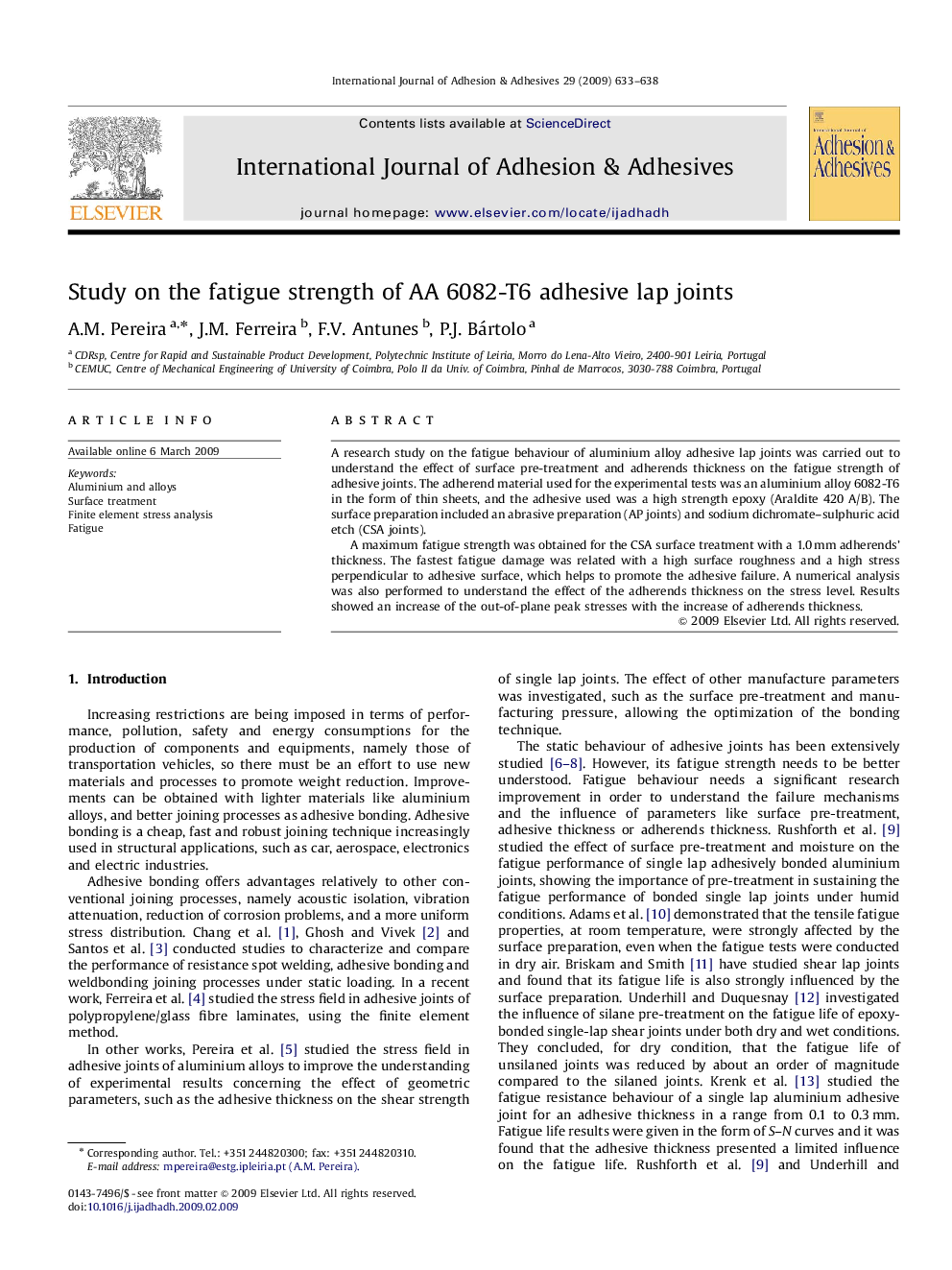| Article ID | Journal | Published Year | Pages | File Type |
|---|---|---|---|---|
| 777348 | International Journal of Adhesion and Adhesives | 2009 | 6 Pages |
A research study on the fatigue behaviour of aluminium alloy adhesive lap joints was carried out to understand the effect of surface pre-treatment and adherends thickness on the fatigue strength of adhesive joints. The adherend material used for the experimental tests was an aluminium alloy 6082-T6 in the form of thin sheets, and the adhesive used was a high strength epoxy (Araldite 420 A/B). The surface preparation included an abrasive preparation (AP joints) and sodium dichromate–sulphuric acid etch (CSA joints).A maximum fatigue strength was obtained for the CSA surface treatment with a 1.0 mm adherends’ thickness. The fastest fatigue damage was related with a high surface roughness and a high stress perpendicular to adhesive surface, which helps to promote the adhesive failure. A numerical analysis was also performed to understand the effect of the adherends thickness on the stress level. Results showed an increase of the out-of-plane peak stresses with the increase of adherends thickness.
